Roofing has been a booming industry for quite some time! As technology continues to develop, roofing is expected to continue to grow and prosper. It’s always important to check on your specific industry’s current trends and statistics. Knowing what’s going on in your field helps maintain a strong thought leadership base for your organization.
This article contains exhaustive information and multiple charts that you are free to reference in your research of the roofing industry.

According to the Associated General Contractors of America, the entire construction industry, which has more than 745,000 employers with over 7.6 million employees, is worth over $1.4 trillion in the United States alone. Roofing is a significant part of the overall construction industry and represents approximately 10% of the total construction budget.
The roofing industry comprises contractors who specialize in different areas, such as residential, commercial, and industrial roofing.
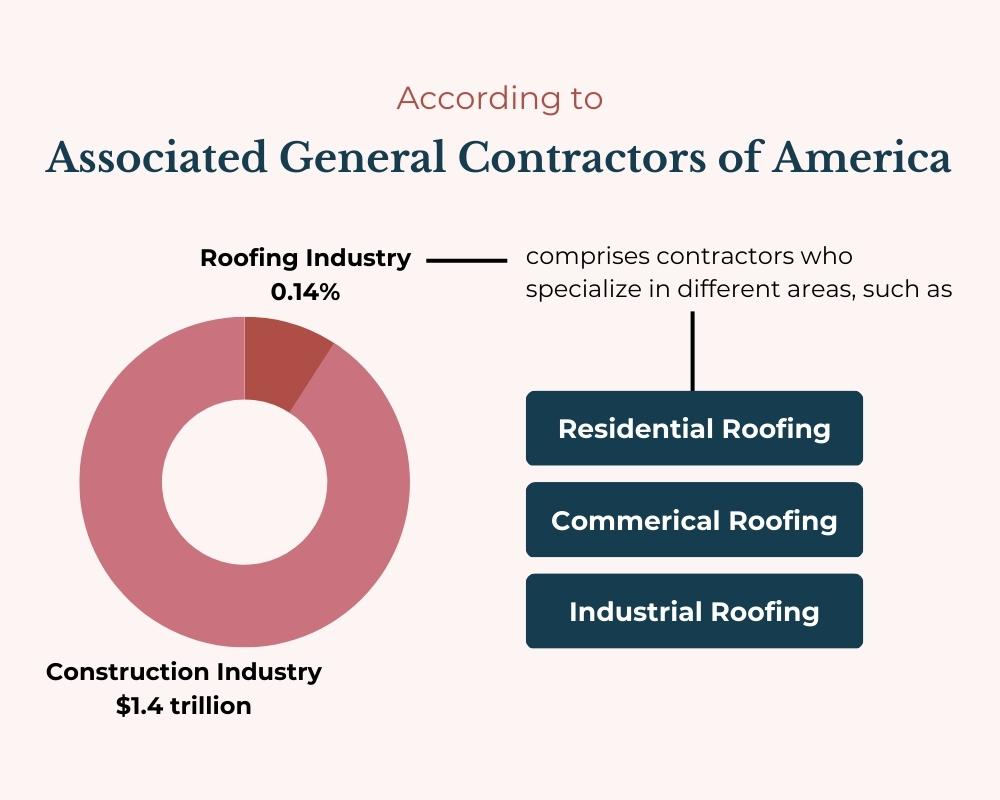
The total number of roofing contractors in the U.S. has increased from 6,000 in 2007 to over 15,000 in 2017. This increase is expected to continue in the coming years. According to Ibisworld, 81,175 Roofing Contractors businesses in the US as of 2022, an increase of 1.5% from the previous year.
The roofing industry has been growing at a steady pace since 2012. According to Ibisworld, there were 81,175 Roofers in the United States in 2022, an increase of 1.5% from 2021. The US roofing contractors’ industry growth rate was 3.8% in 2021. Over 100,000 roofing companies in the United States, an increase of 1.6% from last year.
However, this trend doesn’t appear to be slowing down anytime soon. The United States Department of Labor Bureau of Labor Statistics predicts that by 2023, there will be around 5,920,300 roofers in the United States. This represents a 5%-6% increase in the next five years.
Roofing is an essential part of every home and building. If you’re interested in learning more about the roofing industry, you’ll find the information in this article. There are many important factors to consider before one can start.
Here are a few vital roofing Industry statistics and facts.
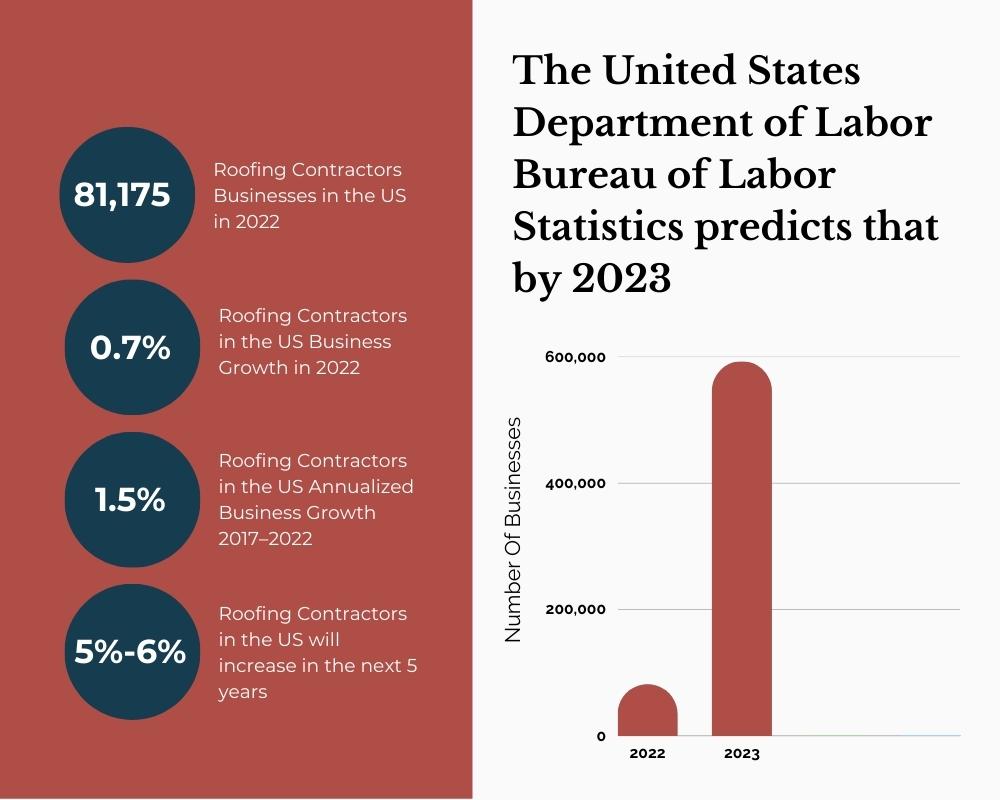
What is Roofing?
Roofing is the covering that protects the structure of a building from the elements. It can also be referred to as the roofing material. The roofing system consists of different components, including the roof, the walls, the insulation, and the drainage system.
The roof is the part of the building that is visible to the public. It is usually made up of tiles, metal sheets, or shingles. The insulation is the part of the roof that prevents heat from escaping and cold from entering the house.
The drainage system is the part of the roof that collects water from rain and snow. The wall is the part of the roof that protects the building from the weather. The roofing materials are the parts of the roof that protect the building from damage caused by the weather.
Roofing Industry
The roofing industry is one of the most crucial industries. Understanding the various aspects of roofinig, including its history, growth trends, current conditions, and future outlook is important to consider. This will assist in deciding what changes are needed to make.
The roofing industry is booming right now, especially in the US. There has been an increase in the demand for roofing services and there are many reasons why the roofing industry is growing. One of the main reasons is the increasing number of new homes being built. There are also more renovations taking place.
Another reason for the growth in the roofing industry is the high cost of building materials. As a result, homeowners are looking for ways to reduce the costs of building projects. With all of these factors to consider, the industry is expected to grow by 2023, which means that the total amount of money that the industry earns will rise from $1.4 billion in 2018 to $1.8 billion in 2023.
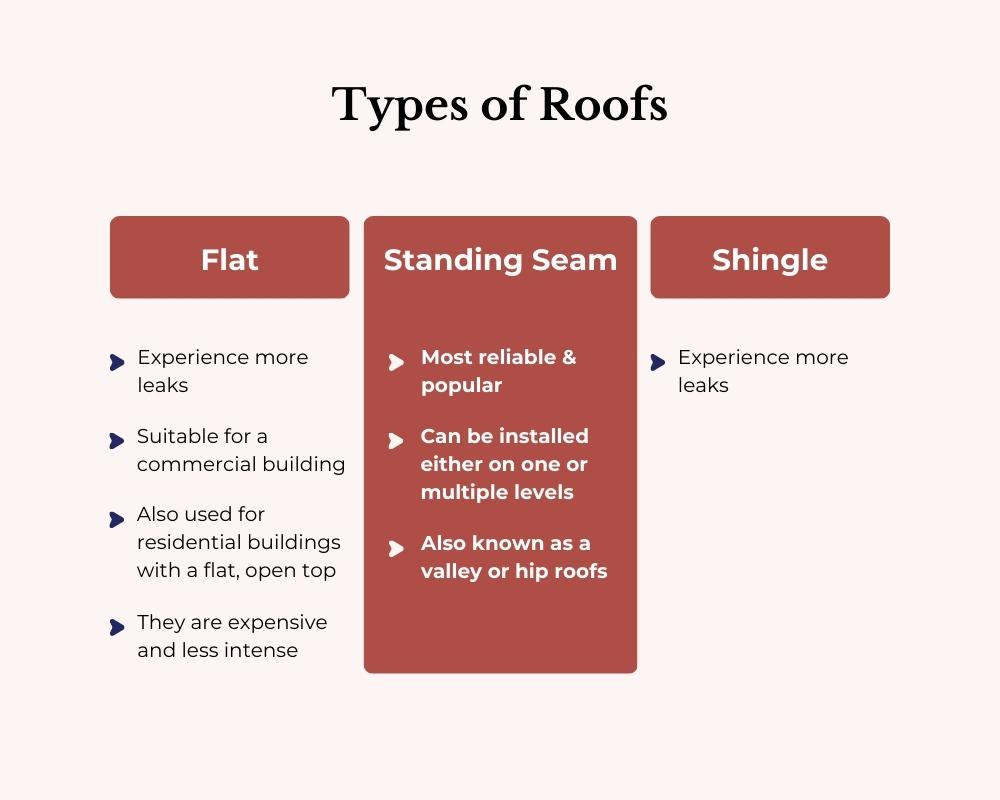
Types of Roofing
Roofing is an essential part of any structure, whether commercial or residential. Therefore, it is important to know what type of roofing you have before you make any repairs.
There are different types of roofs including flat, standing seam, and shingle roofs. Among these, the standing seam roof is growing in popularity since this type of roof is considered to be the most reliable. The other two types, flat and shingle, tend to experience more leaks. A flat roof is suitable for a commercial building and are also used for residential buildings with a flat, open top and are typically used for commercial buildings. However, they are expensive and less intense than standing seam roofs.
Standing seam roofs can be installed either on one or multiple levels. These roofs are also known as a valley or hip roofs.
There are three main types of roofing: asphalt shingles, metal, and tile. These three types are the most common. However, there are other types of roofing available.
Overview of the Roofing Industry Statistics
In 2020, the global market size of the roofing industry was $102 billion according to Allied Market Research, which is expected to reach $156 billion by 2030. Rapid urbanization worldwide is anticipated to enhance market growth on a larger scale because of the new opportunities created by roofing materials and technologies.
Eco-friendly roofing materials, energy-efficient roofing solutions, increasing construction activities, and other factors will drive the roofing market between 2020 and 2027. High implementation, installation costs, and market penetration may hamper the growth of a small market segment. The increase in population will create a demand for better living conditions, resulting in higher spending on construction, including roofing.
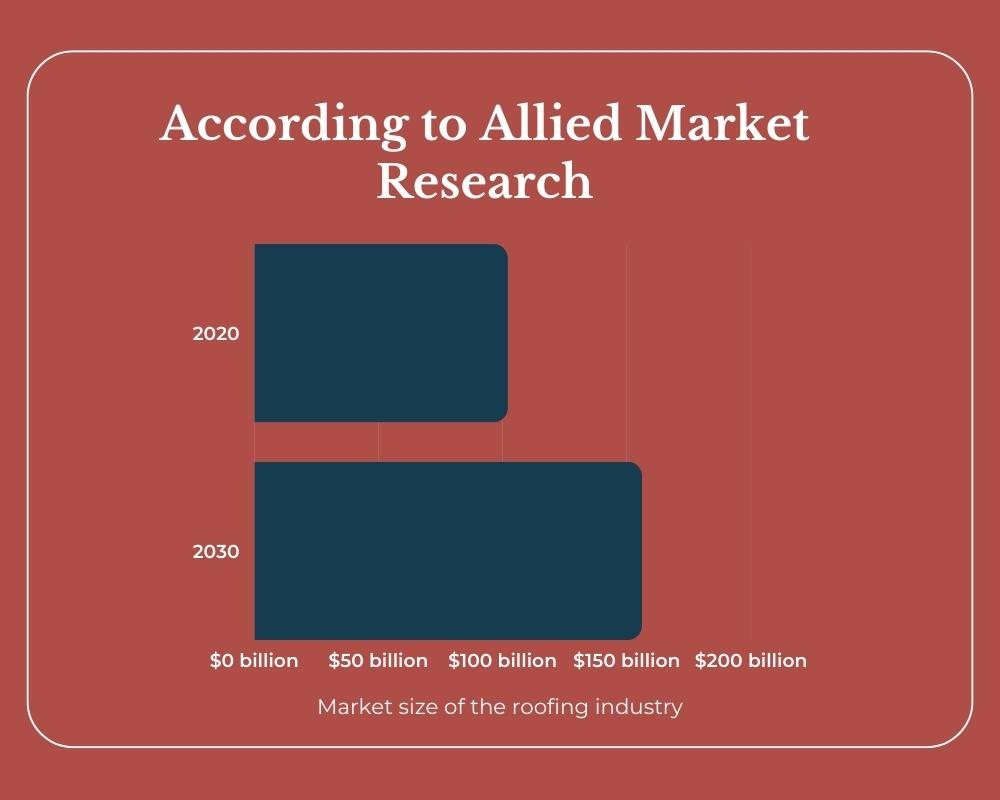
According to the Roofing Contractors Association of America, the roofing industry is worth $56 billion annually in the United States alone. This makes roofing contractors the most significant construction industry by total annual revenue in the country. Roofing has a market share of approximately 6% of the total construction industry.
The roofing industry employs over 3.0 million people in the United States alone, and the roofing industry is responsible for more than 1.7 billion square feet of roofing per year. It also has approximately 1 million jobs, most of which are held by independent contractors.
According to the National Roofing Contractors Association (NRCA), more than 300,000 roofs are installed daily in the United States. This number has been rising steadily since 2004 and is expected to reach 500,000 roofs a day by 2030. In 2016, the average cost of roofing materials was $1-$25 per square foot.
Roofing Industry Marketing Statistics
The roofing industry market is expected to expand in the next five years. Key roofing statistics and trends will help you understand the industry’s growth.
- The growth of roofing industry contractors in the US was 3.8% in 2021.
- There are more than 100,000 roofing contractors in the United States.
- In 2021, the market size of the roofing industry was more than fifty billion dollars.
- The roofing market has recorded over five billion dollars in total earnings.
- As the age of housing increases in the US, there will be more demand for roofing projects.
- Houses have been able to combat persistent flooding because of green roofing.
- According to indicators, it will be over 10 billion dollars in net worth if roofing demand increases by 4% yearly.
- A survey of roofers in 2018 found that, on average, 65 percent reported growth in sales and revenue (Source: Kingdom Roofing).
- The roofing industry grew an average of 2.7% yearly from 2015 to 2020 (Source: IBIS).
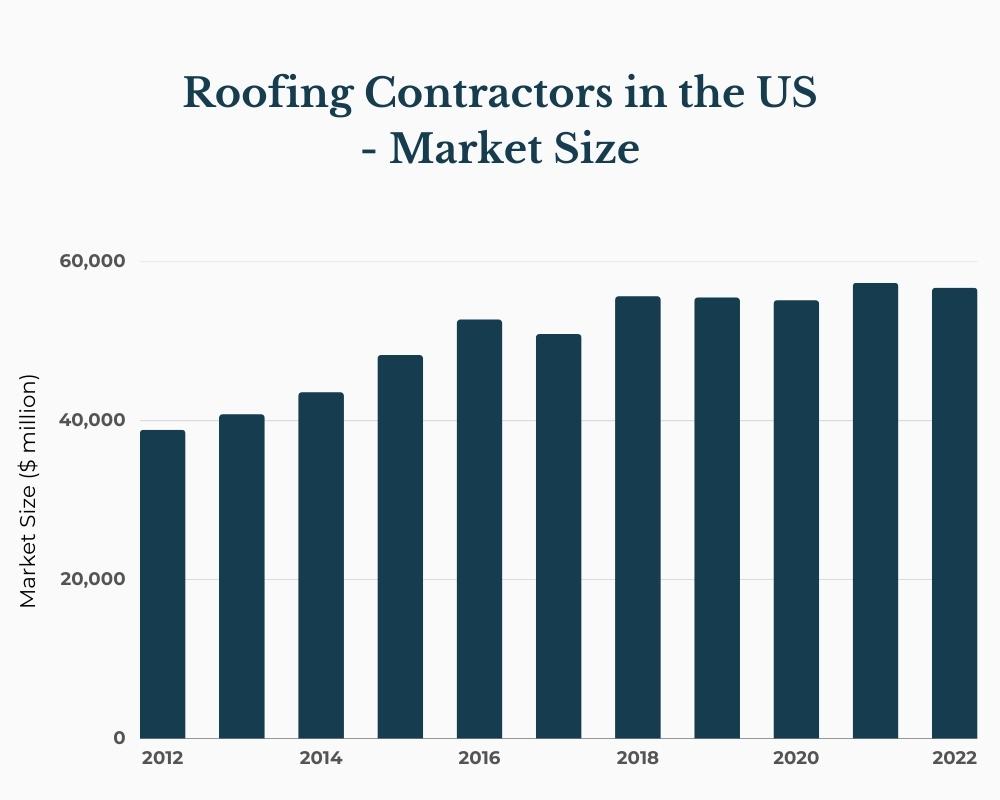
Roofing Latest Statistics by Webinar Care
The roof is the single most crucial part of your home. It protects you and your family from the elements, provides a beautiful architectural feature, and protects the rest of the house. Here are Roofing’s Latest Statistics:
- In North America, roof replacements dominate the market, with over 90 percent of the market in both volume and value.
- From 2015 to 2020, the market size of the roofing contractors industry grew an average of 2.7% per year.
- The roofing contractor industry market size is expected to grow by 0.6% in 2022.
- The roofing contractors industry is growing by one percent annually between 2017-2022.
- 90% of the market is from replacement alone.
- About 54 percent of the entire market is made up of roofers.
- Since the beginning of the year, the UK market has declined by 25 percent.
- According to Metal Construction News, metal roofing makes up 14 percent of the market.
- The employment of roofers is projected to grow at a slower rate than the average for all occupations.
- The roofing industry has a strong forecast of a 4% annual growth rate. By 2021, it will reach $19.
- More than 65% of respondents reported sales and revenue growth in the roofing industry, and more than half expected continued growth.
- According to 78% of roofing professionals, the growth of commercial roofing sales will continue.
- Only 25 percent of industry professionals think the green option will experience significant growth, even though 68% believe solar-related sales will remain consistent.
- 57% of the companies are looking into 3D printing, and 55% of the companies say they will be using artificial intelligence (AI) and predictive analytics in their businesses over the next
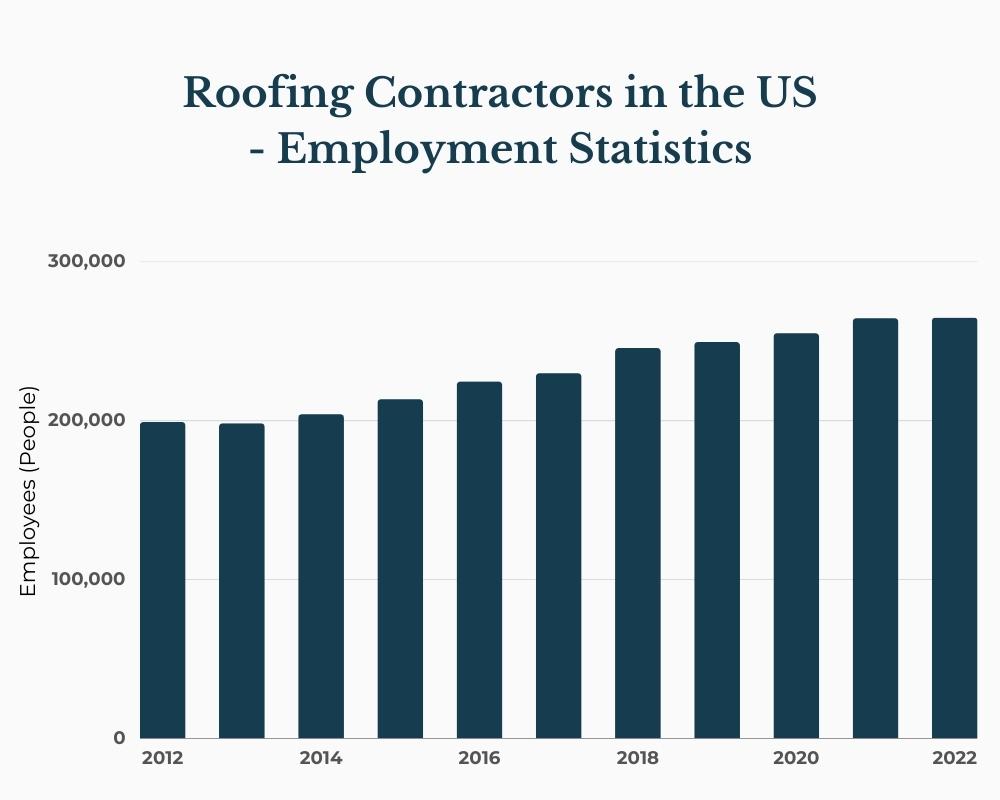
Roofing Industry Employment Statistics
There is a large network of roofers across the US. They make up more than 50% of the market. There are some roofing industry statistics related to employment.
- There has been a 15% increase in the number of people working as roofers since the beginning of the year.
- Over 220,000 people are employed in the roofing business, an increase of over 30,000 workers in the last three years.
- A majority of US roofers work as independent contractors.
- The USA has attractive salaries for roofing employees at entry and professional levels. They make an average of $20 per hour.
- Every year, overtime accounts for $6,000 of a roofer’s pay and benefits such as life insurance, health insurance, and paid leaves.
- If rates continue to go the way they are, roofers at entry-level employment could see exceptional growth.
Roofing Industry Statistics in the Coming Years
The United States had a roofing market of over 15 billion dollars in 2011. The roofing industry statistics are expected to grow by 3.50% over the next 5 years. The roofing industry will be valued at over $18 billion by 2027.
Rapid urbanization and technological advancement are the most critical factors for this growth. In the next year, the industry is expected to see a five percent increase in growth.
The roofing industry is profitable and will stay the same for a while. With many businesses meeting their profit margins, many economists predict it will surpass 19 billion dollars at the end of 2022.
Almost half (50%) of roofing contractors surveyed expect increased employment, jobs, and customer spending on roofing projects over the next year. The overall value of roofing products comes from the product segment of roofing, which represents 65% of the total value. The other elements in roofing have been steady but we have yet to see the growth of this one.
Grow of Roofing Industry by National Roofing Contractors Association (NRCA)
Roofing has become one of the fastest-growing industries in the United States in the last 10 years. It is projected to continue to grow even further in the coming years.
The roofing industry has seen tremendous growth over the past five years. It is estimated that the roofing industry will grow from 4% to 6% in 2020. And by the year 2023, the roofing industry is projected to reach a staggering 12.5%. These numbers are according to the NRCA, and the estimates are based on historical data.
The NRCA has noted that the United States needs to focus on its workforce development to help the country maintain its current output level. This is because the roofing industry is one of the largest employers in the country, but the need for skilled workers can hinder the sector’s growth.
Statistics on Work-Related Deaths in the Roofing Industry
In construction accidents, roofers die more than any other workers. Roofers die at almost twice the average rate of all construction workers, at 29.9 deaths per 1,000 full-time equivalent workers.
Most of these deaths are due to falls from roofs, usually resulting from slipping or tripping. Statistics on injuries in the roofing industry The construction industry is one of the most dangerous industries in the United States. The Bureau of Labor Statistics (BLS) estimated 1,400,000 injuries and illnesses in the construction industry.
In that year, the BLS reported that the construction industry had the highest number of fatal workplace injuries nationwide, with a fatality rate of 3.2 per 100,000 workers.
According to the Bureau of Labor Statistics, the roofing industry had a death rate 1.3 times higher than other construction industries. This means that for every 100,000 employees in the roofing industry, 130 died in a construction accident. This is not a good statistic, and it should motivate you to be extra careful when you work. Roofers have a dangerous job.
They must work in high places, which makes them prone to falling or being hit by other materials. That’s why you should work with a roofing contractor that you trust. You also need to make sure that your roof is built correctly. This is important because it prevents roofers from getting hurt.
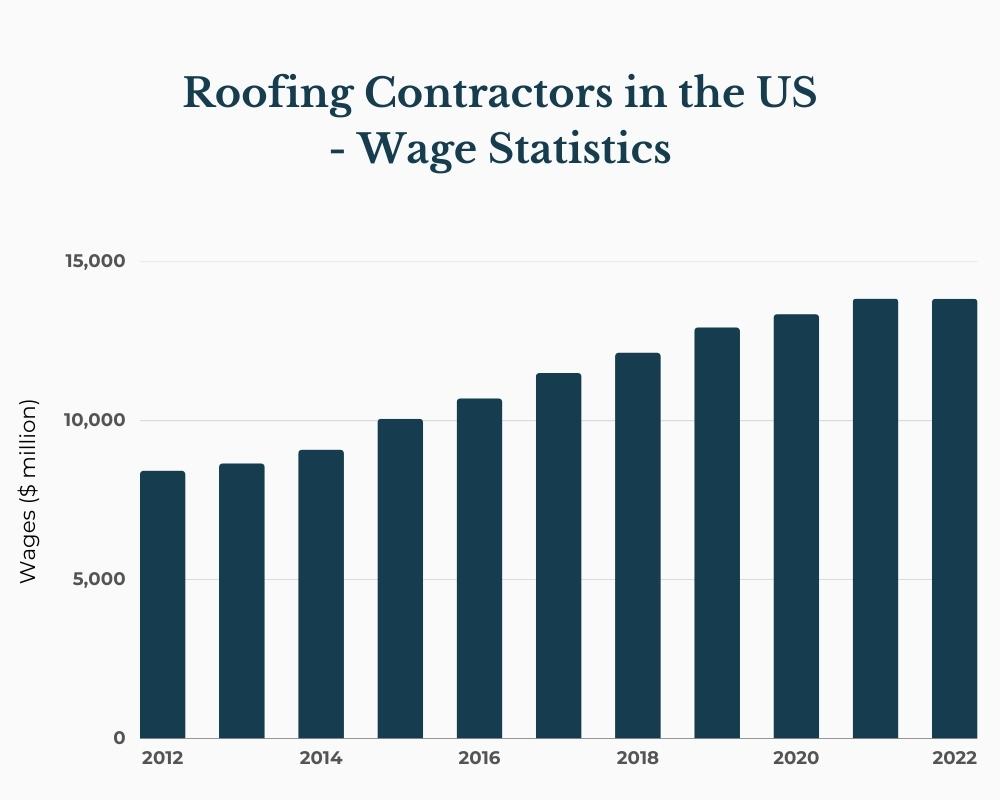
Average Salary in the Roofing Industry
According to the US Bureau of Labor Statistics, the average salary for a roofing contractor is $37,070. Amazon typically offers you a range of between $33,000 and $41,500.
The average annual salary for a roofer is around $45,000. Most of the time, this is the highest-paid position. The average pay is based on the company a person works for. The highest average salary is usually in places like Houston and Los Angeles. The lowest average salary is found in rural parts of the country.
The average annual salary for a roofing contractor ranges from about $42,000 to $60,000. It depends on where you work. The highest salaries are usually found in large metropolitan areas. Some of the highest-paying roofing contractors include companies like CertainTeed and CertainTeed Roofing.
FAQ About Roofing Industry
What is the current size of the Roofing Contractors industry in the US?
The roofing contractors industry is one of the largest in the United States. It’s estimated that over 1 million roofing contractors are working across the country. Of these, it’s estimated that 70% of them are independent contractors. The remaining 30% work for larger companies. The roofing contractors industry, valued at $56.7 billion in 2022, is a vast market opportunity.
The roofing contractors industry is currently a $60 billion business. It is bigger than the combined real estate, automotive, insurance, and construction industries. According to the United States Department of Commerce, the United States is home to about 7,000 licensed roofing contractors.
The roofing contractors industry is growing faster than any other construction industry in the United States. In 2010, the number of workers in the roofing contractors industry grew by 4%, compared to the previous year.
The industry had an estimated employment level of nearly 3 million in 2010. If this rate continues, the industry will have about 5.1 million jobs in 2020. In addition, over 2 million residential roofing projects were completed in 2010.

What are the most common types of roofing materials?
The most common type of roofing material is the asphalt shingle. The asphalt shingle is a flexible, waterproof membrane made from bitumen. It is usually made from a mineral and petroleum mixture called asphalt. Other common roofing materials include metal roofs and concrete roofs. Metal roofs are made from aluminum and copper alloys.
Metal roofing provides both fire protection and insulation. A concrete roof is a waterproof, non-combustible, low-maintenance roof that protects your home against water damage. Concrete roofs come in shades such as black, gray, and white. There are also composite roofs made of fiberglass and polyester resin.
There are many different types of roofing materials. Each material has its advantages and disadvantages. Therefore, it is essential to figure out which roofing material is right for your home. For example, if your house is going to be used as a vacation home, you might want to use tile for your roof.
This can protect your investment, especially if you have children and pets. You can also use tiles to add a unique look to your home. On the other hand, you should use something other than clay roofing for your vacation home. Clay roofing is very heavy, which makes it a poor choice for vacation homes. Clay roofs need to be replaced every 10 years.
What percentage of my total budget should I allocate to my new roofing?
Your house may need a roof repair or replacement, and you should be prepared for many expenses. Before you decide to have a roofing contractor replace the roof of your house, you should know the cost. Roofing contractors generally charge on a per-square-foot basis.
The square footage of your roof is usually considered when the contractor calculates the final price. So, if your roof is 1,200 square feet, you may pay $2,400 to repair or replace it. To find out how much you can expect to spend, you should ask your roofing contractor how much he charges per square foot.
There is no correct answer to this question. However, different variables determine how much of your budget you should spend on your new roofing. These factors include the type of roof you want, the amount of money you spend, and your specific location.
The first step in determining how much to allocate to your roof is what kind of roof you want. It’s essential to make sure that you know the best type of roof for your home and location before you start shopping for one. This will help you to get the most out of your roof.
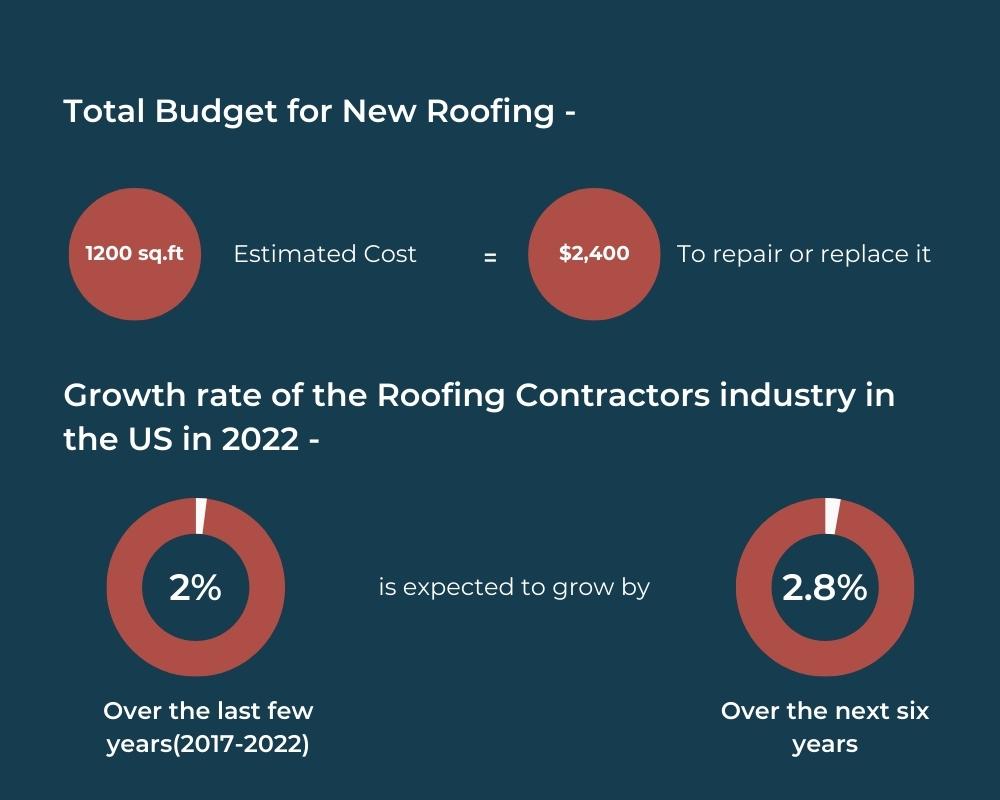
What is the growth rate of the Roofing Contractors industry in the US in 2022?
This is good news for everyone who owns a home and needs a roof repair. The roofing contractors industry is expected to increase slowly, allowing you to save a bit of money on roof repairs.
According to the International Construction Association, the market size for the roofing contractors industry will decrease by 1.1% in 2022. The Roofing Contractors industry’s market size in the US has grown over 2% over the last few years(2017-2022).
The industry of roofing contractors is expected to grow by about 2.8% per year over the next six years. That means the total number of roofers will increase by approximately 4 million over the same period. That’s a significant increase in the number of roofers in the country.
The most significant factor affecting the overall growth rate of the roofing contractors industry in the United States is the demand for new residential and commercial buildings. The need for new homes has grown slowly during the past few years. However, this has changed over the past two years. The construction of new homes has increased as the housing industry recovers from the recession.
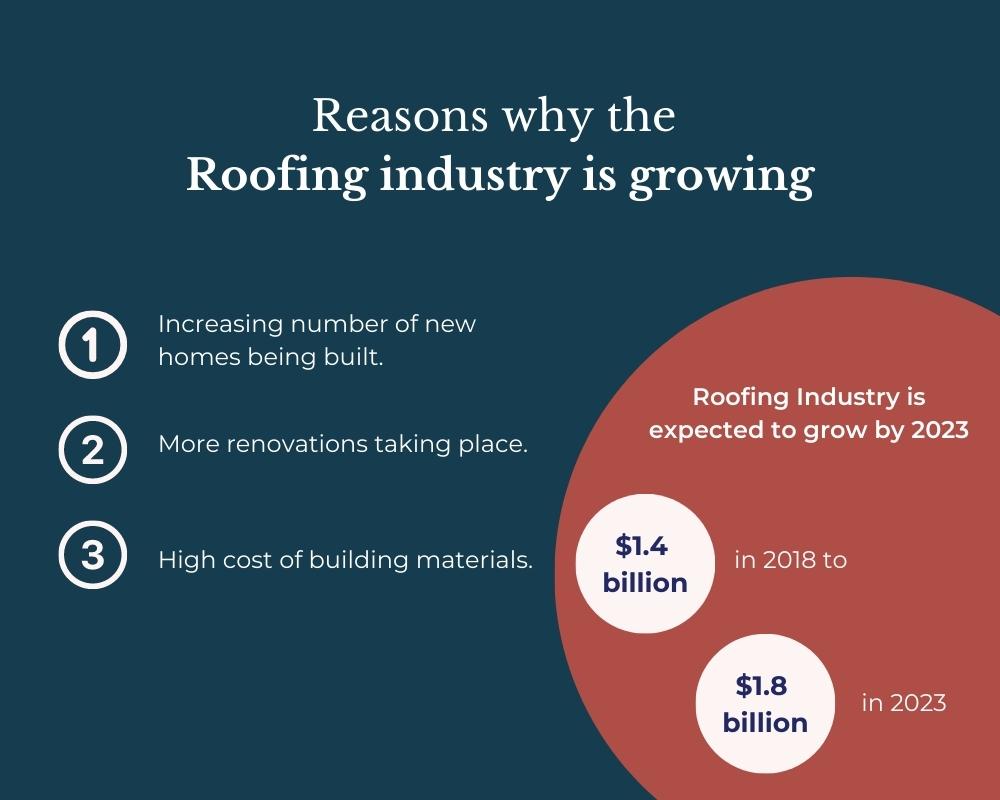
How has the Roofing Contractors industry performed over the past five years?
Compared to the economy, the market size of the Roofing Contractors industry in the US has not changed. The demand for new residential and commercial buildings has increased significantly. Construction has returned to an average pace. Over the past few years, the US economy has been fragile, which made the demand for new housing drop. Housing starts dropped to their lowest level since the 1970s.
However, that has changed recently. According to the U.S. Census Bureau, the demand for new home buildings increased in 2010 and 2011. New home building increased by 2.4%. The average selling price for a newly built home increased by 6.7%. These trends indicate that people are starting to repurchase homes.
Construction of new homes has been picking up again. The construction of new homes and commercial buildings is good for the Roofing Contractors industry. This industry has experienced significant growth over the past few years. The total number of roofers has grown by about 4.2 million. This increase in the number of roofers means more jobs for the people who work for these companies.
What is the greatest opportunity for growth in the roofing contractors industry in the US?
Residential construction spending contributes to revenue growth for the roofing contractor industry. Demand for homes has increased as the housing market has expanded over the past five years. Low-interest rates and rising per capita disposable income have made home ownership more affordable for consumers, increasing the need for new roofs. The value of residential construction is expected to increase in 2022, presenting a potential opportunity for the industry.
Construction of new homes has been picking up again. The construction of new homes and commercial buildings is good for the Roofing Contractors industry. The market size of the roofing contractor industry in the United States has grown faster than the construction sector over the past few years. The total number of roofers has grown by about 4.2 million. This increase in the number of roofers means more jobs for the people who work for these companies.








